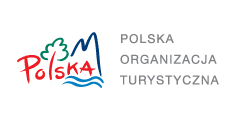Wapienne
Wapienne
Wapienne is a spa village in the municipality of Sekowa which is in Gorlice District in Lesser Poland Province. It is one of the smallest Polish spa resorts situated in the Lower Beskid Range lying in the valley of the Wapienka mountain stream and surrounded by the peaks that include Lysa Gora, Ferdel, Kamienna Gora and Mecinska Gora. The resort has the characteristics of a piedmont spa and has vast areas of mixed forests, which are part of the Carpathian Forest in close proximity to the village. Part of the village lands also fall inside the Magura National Park while the rest are in the area of Protected Landscapes. In addition to the unique foothill climate the basic elements used by the spa are the extracted natural mineral waters that are rich in sulphides, bicarbonates, calcium, sodium and magnesium and deposits of high quality therapeutic mud.
History of a settlement dates back to 1546 when King Zygmunt Stary gave Michal, the son of the Mayor of Mecina the right to establish a village under Wallachia Rights which was inhabited by Lemkos. By 1629 Wapienne was a royal village and part of Biecz District but was sold into private hands, to the Lubomirski family, in 1765. It was later purchased, like almost all the Biecz lands, from the Austrian government by Wilhelm Siemienski, the governor of Biecz at the time. He subsequently left the village of Wapienne to his son Stanislaw and his wife in 1789. By 1890 the village was made up of 56 households which amounted to a population of about 335 which, by 1938, had risen to about 460 Greek Catholics (Uniates) who had their own parish church in Mecina Wielka.
Spa traditions in Wapienne date back to the 17th century when venereal diseases were treated here but only began to develop extensively till the 19th century. According to various sources Napoleonic soldiers were treated here between 1810 1nd 1815 when Wapienne was known as „Schwedelbad”. By 1848 there were 3 villas and a bathing facility with 50 baths that were distributed amongst 36 separate cabins. Unfortunately these were destroyed in two fires in 1878 and 1894. These facilities were subsequently rebuilt between 1904 and 1906 by the new owners, the Bubniak family. There was much destruction during the First World War because of Operation Gorlice in 1915 as many battles were fought over the hills and the Ferdel and Kornuty mountains which was the second line of Russian fortifications. Between the wars the facilities were partially rebuilt to the point that about 100 people a day were bathing in the therapeutic waters and the slow and progressive development of the resort had began. The uniqueness of the spa at Wapienne was that it belonged to local peasant and only peasants and residents from neighbouring villages came here for treatments. It was a resort that was modestly furnished and cheap unlike the resort at Krynica which was open to a wider range classes and a greater volume of patients.
Again the damages incurred during World War II were only partially repaired and the facility re-opened in 1948 but was not fully operational till 1952. Over the following years the resort is redeveloped, but on a small scale. In 1973, there is a 20m outdoor pool surrounded by sports and leisure areas as well as several luxurious chalets. It becomes a popular area for organised children and youth camping holidays.
Today Wapienne specialises in the treatment of locomotive diseases, rheumatism and conditions of the circulatory system and the skin. There are three sources of natural mineral water named „Marta”, „Kamila” and „Zuzanna”. A stay in Wapienne, in very intimate surroundings and in an unpolluted environment, is not only good treatment for the body but also a wonderful holiday.


